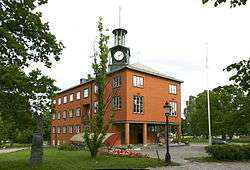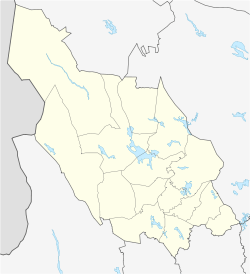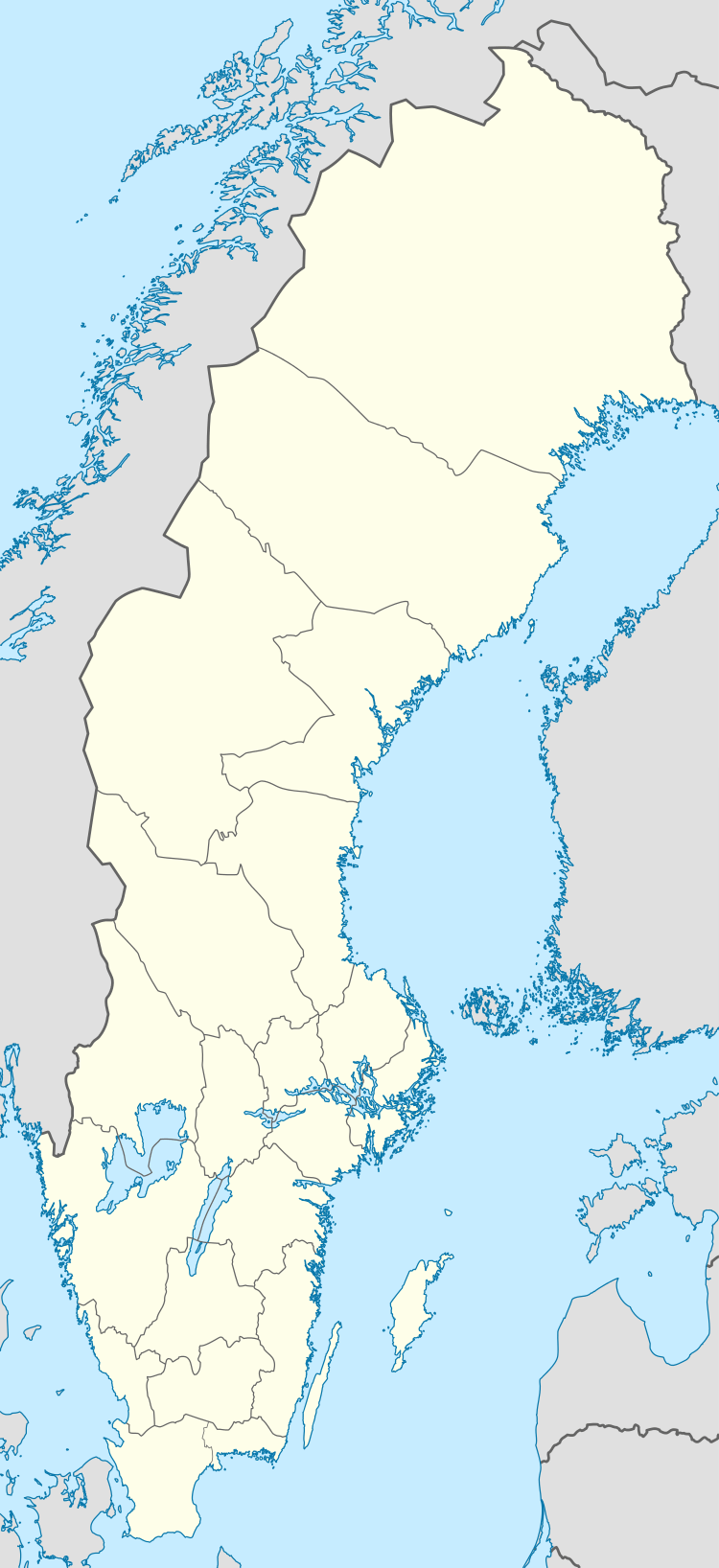Ludvika
Ludvika (Swedish pronunciation: [ˈlɵ̂dːˌviːka])[2] is a bimunicipal city and the seat of Ludvika Municipality, Dalarna County within the country of Sweden, with 14,498 inhabitants in 2010.[1]
Ludvika | |
|---|---|
 Ludvika Town Hall | |
 Coat of arms | |
 Ludvika  Ludvika | |
| Coordinates: 60°08′N 15°11′E | |
| Country | Sweden |
| Province | Dalarna |
| County | Dalarna County |
| Municipality | Ludvika Municipality and Smedjebacken Municipality |
| Area | |
| • Total | 11 km2 (4 sq mi) |
| Population (31 December 2010)[1] | |
| • Total | 14,498 |
| • Density | 1,318/km2 (3,410/sq mi) |
| Time zone | UTC+1 (CET) |
| • Summer (DST) | UTC+2 (CEST) |
Overview
The conurbation of Ludvika extends over the border of Smedjebacken Municipality, where about 400 inhabitants live.
Ludvika is situated by Lake Väsman in the south-east part of the municipality.
Population of Ludvika as of 2005 distributed by municipalities:
| Municipality | Population in Ludvika | Other urban areas | Other | Total | % of municipality population |
|---|---|---|---|---|---|
| Ludvika | 13.726 | 9,234 | 3,232 | 26,450 | 52.87 |
| Smedjebacken | 392 | 7,595 | 3,577 | 11,598 | 3.67 |
| Total | 14,018 | 16,829 | 6,809 | 38,048 | 37.87 |
Economy
A major employer in Ludvika is the power engineering conglomerate ABB, whose activities in the town include power transformers, capacitors, ac breakers and equipment for high-voltage direct current power transmission.
Notable natives
Schools
gollark: Those aren't really being built either in most places.
gollark: It isn't like stuff is quite that doomed.
gollark: Less though.
gollark: How is more abundant fuel not a significant advantage?
gollark: The UK can't get *any* nuclear plant on a reasonable budget and doesn't seem to have any very modern ones.
References
| Wikimedia Commons has media related to Ludvika. |
- "Tätorternas landareal, folkmängd och invånare per km2 2005 och 2010" (in Swedish). Statistics Sweden. 14 December 2011. Archived from the original on 10 January 2012. Retrieved 10 January 2012.
- Jöran Sahlgren; Gösta Bergman (1979). Svenska ortnamn med uttalsuppgifter (in Swedish). p. 16.
This article is issued from Wikipedia. The text is licensed under Creative Commons - Attribution - Sharealike. Additional terms may apply for the media files.